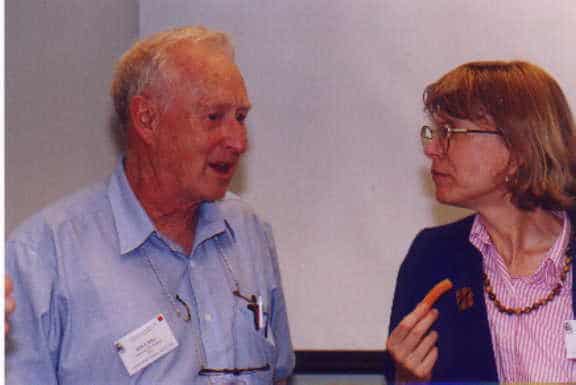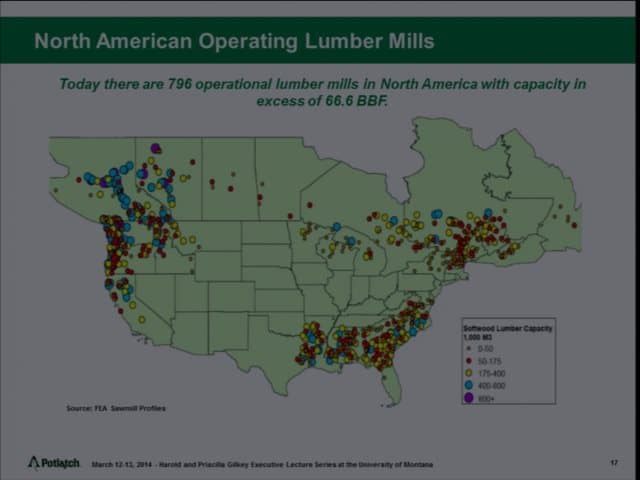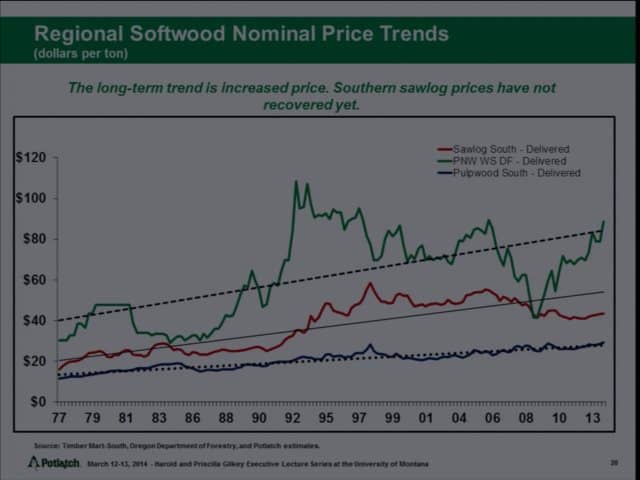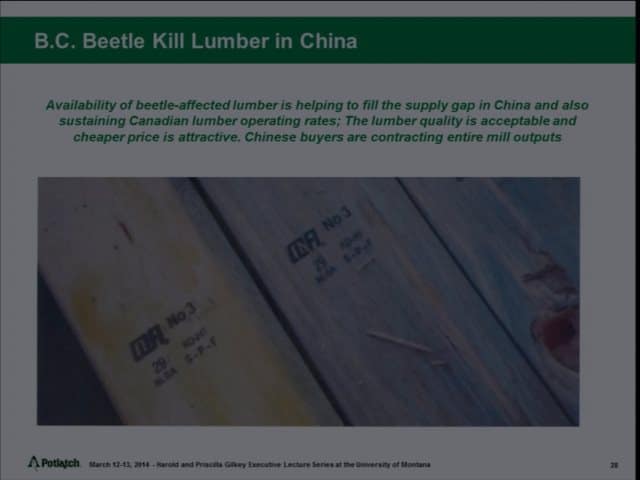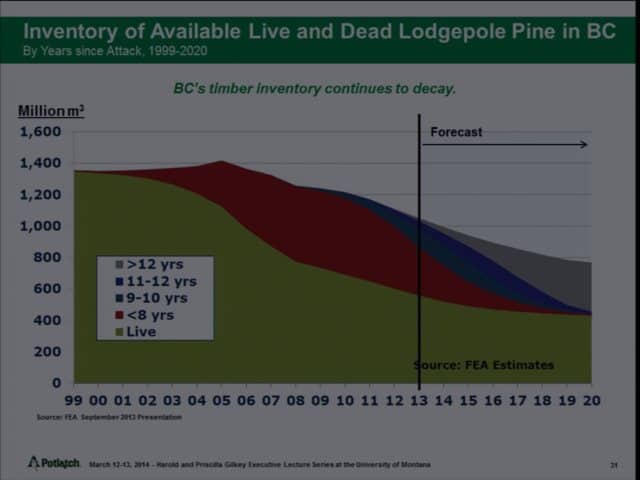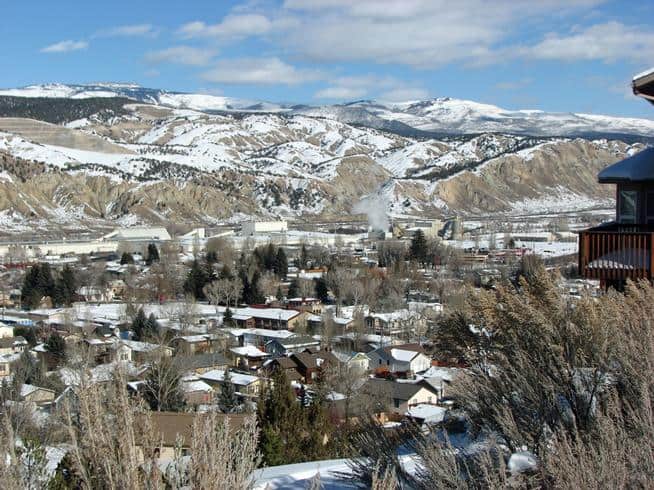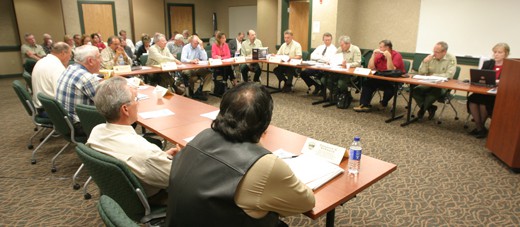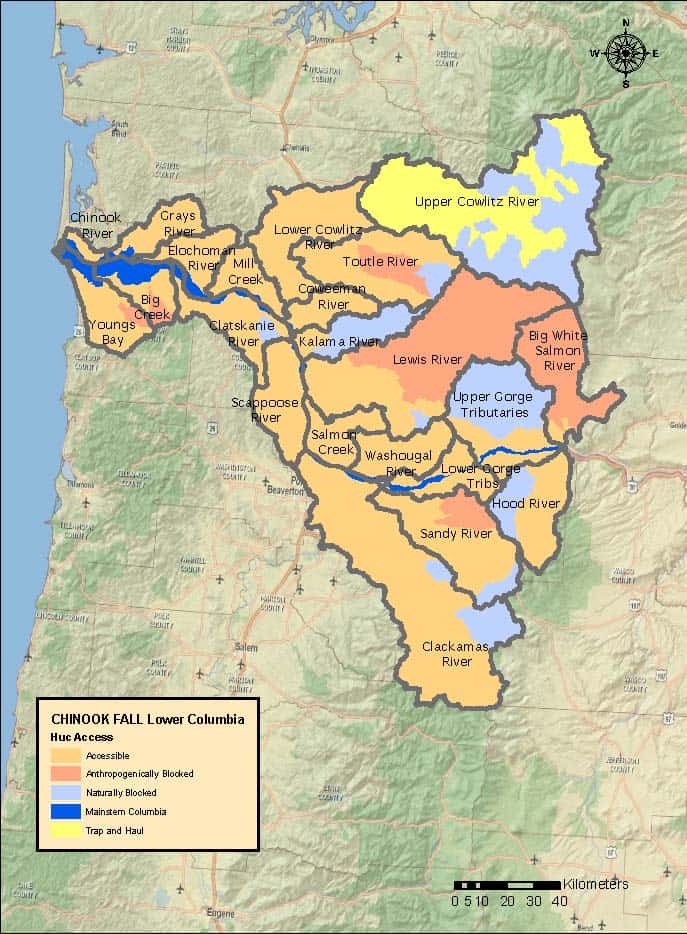“If there’s any reason that the Tester bill has not moved along better than it has, it’s because of its mandates that there not only be logging, but that certain amounts of timber be extracted. Conservation-minded Senators are very hesitant to vote for that, even though they recognize the Montana wilderness dilemma. They don’t want to set a precedent for other bills to do the same thing….I do worry about the mandate of it. If I was in the Congress, and all this time had gone by without success on designating new wilderness, I would try to amend the Tester bill in one way or other.”
– Former Montana Congressman Pat Williams
Collaboration conundrum – Wilderness advocates sharply divided on ‘consensus’ proposals
By John S. Adams, Great Falls Tribune
At a June 8, 1997, gathering in Kalispell, former U.S. Forest Service Chief Jack Ward Thomas foretold a vision of the future for national forest management in Montana.
According to a newspaper account of Thomas’ address to the Montana Logging Association, President Bill Clinton’s former forest chief predicted a “golden decade of conservation” in which environmental groups and timber interests would work side by side to reach “consensus” on the future of management of federal forest land.
Thomas predicted those collaborative projects on the national forests would break down the barriers to logging on public lands and “marginalize extremists.”
“I don’t see any other game in town,” Thomas said in a report in the Daily Inter Lake.
More than 16 years later, Thomas’ prediction has partly come to pass, but with as-yet-undetermined results.
If Thomas’ “golden decade of conservation” relies on the success of consensus and collaboration, then there may be no better test of that theory than Sen. Jon Tester’s Forest Jobs and Recreation Act.
FJRA is the first major piece of federal land management legislation in Montana to spring from the well of “collaboration,” and it is by far the most ambitious and controversial. Many wilderness advocates have fiercely opposed the measure since its introduction in 2009. Their primary criticism of the bill, though they have many, is that it mandates the Forest Service log tens of thousands of acres in the Beaverhead-Deerlodge and Kootenai national forests.
Sen. Max Baucus followed Tester’s bill with a proposal of his own in 2011. The Rocky Mountain Front Heritage Act has many of the same detractors who say it designates a paltry amount of wilderness while locking-in grazing, logging and motorized recreation. However, with its lack of logging mandates and fewer carve outs for permanent motorized recreation, the opposition from the environmental community is less severe.
Both bills rely on the idea of bringing the timber industry groups, conservationists and other stakeholders together to hammer out consensus proposals for public land management. That concept, particularly when it comes to Wilderness proposals, has fierce detractors in the environmental movement.
Count 88-year-old Stewart “Brandy” Brandborg among them.
Brandborg was director of Wilderness Society from 1964 to 1977. His grass-roots organizing and advocacy were pivotal in the passage of the 1964 Wilderness Act.
Brandborg, the son of former Bitterroot National Forest supervisor and early Selway-Bitterroot Wilderness advocate G.M. Brandborg, spent much of his youth traipsing around in the places that would much later be designated as federal wilderness thanks in large part to his efforts.
Collaboration, as demonstrated by the process that created FJRA and the Heritage Act, is antithetical to the original concept of the 1964 Wilderness Act and threatens to undermine the bedrock administrative laws that demand public involvement and transparency in land management decisions, Brandborg said.
“Good management of land prescribed by public land agencies, and good protective measures for water and our environment in general, are being subjected to a rash of proposals and policies that defy every rule and every restriction we’ve placed on resource management,” Brandborg says. “I take gross exception to the go-along policies of those state and local organizations who say we can embrace collaboration.”
Four-and-a-half years since Tester’s Forest Jobs and Recreation Act was first introduced, the bill continues to languish in the Senate, and wilderness advocates remained locked in a bitter internecine battle that some say could undermine the entire future of wilderness in Montana.
On the one side are the fiery wilderness conservationists whose work and advocacy centers on the prevention of new roads and industrial resource extraction on Montana’s remaining roadless landscapes.
On the other side are the pragmatic conservationists who say collaborative proposals built on consensus and compromise among various stakeholders are the only realistic approach to the larger goal of adding more wilderness in Montana. Large-scale “wilderness-on-its-own” legislation that doesn’t include “place-based solutions” that appeal to local community interests — including the timber industry — don’t stand a chance of passing, they say.
Poster child
First introduced in 2009, the core of the FJRA proposal sprang from a series of private meetings that began in 2005 between Sun Mountain Lumber, Roseburg Forest Products, Pryamid Mountain Lumber, RY Timber, Smurfit Stone, Montana Wilderness Association, National Wildlife Federation and Montana Trout Unlimited.
In its current form, it calls for approximately 666,000 acres of new wilderness while mandating a minimum of 5,000 acres of logging per year on the Beaverhead-Deerlodge National Forest until at least 70,000 acres have been logged.
Another 30,000 acres would be mandated for logging on the Kootenai National Forest.
Conservation groups who support the measure, including the logging mandates, point to the trade-offs in the FJRA as the key to breaking the gridlock that has left Montana without a new “Big W” wilderness designation for more than 30 years.
“To me, personally, I can’t accept the idea that wilderness is something that other states get to enjoy the benefits of and protect — 29 other states in the last 30 years — but not Montana. Because we have lands that are superbly qualified to be in the wilderness system,” said John Gatchell, conservation director for the Montana Wilderness Association.
Only Idaho, with 9.3 million acres, has more roadless land in the lower 48 than Montana, with 6.3 million acres. Idaho and Montana are the only states with vast tracts of roadless wildlands that have not passed large-scale statewide wilderness designation bills in the past three decades.
MWA’s supporters say it’s high time to make new wilderness happen, even if that means turning over some of Montana’s roadless land to logging, mechanized recreation and other activities that are nonconforming to wilderness characteristics, as part of the deal.
Gatchell says the alternative is to continue to wait and watch as wildland currently suitable for wilderness designation are degraded by activities and uses that would forever exempt them from future designation.
A pure, large-scale wilderness bill, such as the 20-year-old Northern Rockies Ecosystem Protection Act has no chance of passing Congress, Gatchell says. NREPA has been introduced five times since 1993, and though it has drawn many congressional co-sponsors over the years, it has failed to make it to the floor for a vote.
“A bill that doesn’t get voted on cannot protect, will not protect and has not protected a single acre of Montana,” Gatchell said. “I just think that what’s important here is we need legislation and we need the Montana delegation, or some members of the delegation, to champion that legislation for it to pass Congress.”
New precedent
Other wilderness advocates see the collaborative process behind FJRA as monumental threat to the future of America’s public lands legacy.
With its mandated logging on the Beaverhead-Deerlodge National Forest, release of wilderness study areas and carve-outs for motorized recreation and mountain biking, the precedents set by FJRA would make it too tempting for members of Congress in other states to follow its lead, some detractors say.
The possibility of new era of congressionally mandated levels of public lands resource extraction is not worth the tradeoff for a few hundred thousand acres of wilderness, say environmental critics of the bill.
Matthew Koehler, executive director for the Missoula-based WildWest Institute, testified against FJRA during a 2009 Senate committee hearing on the bill. Koehler has been highly critical of the substance of FJRA since it was first introduced. Koehler’s main critique of the measure, though he has many, is the precedent it could set for future lawmakers.
“At a time when the approval rating of politicians in Congress is at 10 or 15 percent, these groups want to take management authority away from the Forest Service and the public and they want to put it in the hands of politicians to mandate resource extraction levels on public lands,” Koehler said. “If Tester’s bill passes, it will open up the door in years to come for politicians all around the country to say, ‘You know what? In my state we’re going to tell the Forest Service that we want this amount of grazing, or this amount of fracking, or this amount of coal mining.’
“I don’t feel like getting a few more acres of wilderness in Montana is worth forsaking America’s entire public lands legacy,” Koehler said. “That’s not a fair trade in any way shape or form.”
Bruce Farling, executive director of Montana Trout Unlimited, says critics such as Koehler are lone voices in the wilderness who don’t represent the viewpoint of the majority of Montanans.
Farling says “individual environmentalists” such as Koehler are sour grapes detractors who refuse to offer up proactive solutions to the “gridlock” that exists in public land management, and instead choose to appeal and litigate timber sales.
“They’re hypocrites,” Farling says. “They cut deals all the time. They appeal, sue the Forest Service, sit down and negotiate behind closed doors and say ‘OK, you guys stay out of here, we’re OK with you going over here.’”
Farling said the public knows what the collaborators are doing and the process is open and transparent, a point to which Koehler takes exception.
“Some of the worse examples of collaboration in Montana are nothing more than invite-only, self-selective groups that are dominated by politically connected and well-funded organizations and the timber industry,” Koehler said.
“If the litmus test for participating in their invite-only processes is that you must agree that politicians, through legislative riders, mandate the amount of logging or resource extraction on public lands, well we’re not going to participate, nor are many other people going to participate in such a tainted process,” Koehler said.
Internecine conflict
Brandborg, the octogenarian wilderness organizer, takes a harsh view of the collaborators who are at the heart of the FJRA. Brandborg believes moneyed interest closely tied to Democratic Party politics are to blame for the conservation movement’s willingness to “cut the baby in half” on wilderness protection.
“We’ve had an evolution in the strategies of our opponents, who have said, ‘Let’s go find these weak elements in Montana. Let’s go cultivate them and get them money so they can go about this job of … bringing down their forceful campaigns to protect wild- lands,” Brandborg said.
Larry Campbell, a longtime grass-roots wilderness advocate with Friends of the Bitterroot and close friend of Brandborg’s, said there’s always been a rub within the environmental community between those groups that appeal and litigate and the larger, better-funded, membership-based groups that take a more mainstream approach to conservation advocacy.
Campbell maintains wilderness advocates lost very few wilderness-eligible acres to development and other non-conforming activities since 1988, when President Ronald Reagan pocket-vetoed the last Montana wilderness bill to pass Congress.
That measure was supported by all three Democratic members of Montana’s federal delegation at the time, Sens. John Melcher and Max Baucus and Rep. Pat Williams. Republican Rep. Ron Marlenee opposed the measure, which would have designated 1.4 million acres of Forest Service land into wilderness and released approximately 4 million acres of protected wildlands to development. With Reagan’s veto most of those lands remained under protected status until Congress acted to change it. So far that hasn’t happened.
Campbell says most of Montana’s wildlands have remained undeveloped since then thanks to grass-roots wilderness advocates who actively organized and participated in federal administrative appeals processes and litigation.
Campbell said the new wave of collaboration threatens to undermine years of work by groups like Friends of the Bitterroot, Alliance for the Wild Rockies, WildWest Institute and other grassroots organizations who fought hard to keep those lands protected.
“We did not lose very many wilderness acres between 1988, when Pat Williams’ wilderness bill went down, and when this thing (FJRA) was hammered out,” Campbell said. “We were protecting all of them — the wilderness study areas, the inventoried roadless areas as well as the small ‘r’ roadless areas — from projects, timber sales, whatever, and we won.”
Campbell said the smaller, grass-roots activist groups were content to maintain that track of protection until the political conditions were ripe for another shot at a large-scale wilderness proposal. When President Bill Clinton in 2001 implemented the Roadless Area Conservation Policy directive, known as the “roadless rule,” it gave groups like Friends of the Bitterroot even more tools to protect Montana’s wildlands.
“We had going for us the appeals and litigation administrative process, the roadless rule protections, and also some court decisions that were adding to our toolbox all the time,” Campbell said.
Campbell said at the time MWA, TU and others began sitting down with the timber industry, wilderness conservation advocates “had more tools” to protect wildlands than ever.
“They started cutting up our babies,” Campbell said. “The true grass-roots activists who had been fighting for these wildlands in force on the ground, were not invited to be a part of the process. Those grass-roots groups are the groups who appealed and litigated and actually protected those wildlands that went on the table and started getting diced up by the junior politicians.”
Peter Aengst, senior regional director for the Wilderness Society, says Montana’s wilderness advocates shouldn’t be airing their differences and disagreements in the public sphere. The Wilderness Society, which Brandborg once helmed, supports FJRA and other collaborative conservation projects including the Heritage Act.
“We’ll have disagreements, I think that’s fine, I think hopefully we can all learn from each other,” Aengst said. “The idea of labeling, the idea of in the media attacking one another, that doesn’t help anyone.”
Aengst said it’s unrealistic for groups such as Friends of the Bitterroot or WildWest Institute or the Helena-based Alliance for the Wild Rockies to expect the entire wilderness conservation movement to follow the beat of their drum.
“It’s not realistic to expect that we’re all going to agree on everything, but that doesn’t have to stop us from moving forward and exploring collaborative place-based solutions,” Aengst said. “I think generally we all share the same end goals. I don’t think that’s where the disagreement is.”
Williams has been contemplating the rift between the two main camps in Montana’s wilderness advocacy community.
“Interestingly enough, both sides are right and both sides know it,” Williams said. “On the one hand, the people who want one large, intact, statewide bill are ecologically correct. In other words, that side understands that grizzly bears don’t know where the county lines are.
“However, the place-based people, while sometimes setting aside ecological importance, are more correct in their political strategy,” Williams said. “That is, a huge bill, would likely not pass the congress, whereas a series of smaller place-based bills might.”
Unknown outcomes
So far Tester’s bill has not made it out of committee, but the collaborative process that led to the first wilderness proposal in the state in more than 20 years has managed to drive a deep wedge in the state’s wilderness conservation community.
Williams said he believes the only wilderness bill that has a strong change of passing in Montana anytime in the near future is Baucus’ Rocky Mountain Front Heritage Act. Williams said if the measure makes it to the floors of Congress for a vote, “voting against it would be akin to voting against protecting the Statue of Liberty.”
Tester’s Forest Jobs and Recreation Act, with is controversial logging mandates, faces a much tougher row to hoe.
“The Tester bill, with its protections of place combined with logging mandates, should long ago have appealed to both sides, and yet it sits unpassed in the U.S. Senate,” Williams said. “That surprises me and says to me that Montana may have some very rough legislative patches ahead in trying to protect its landscape.”
Williams, an FJRA supporter, said no other wilderness bill before Congress has ever taken the approach FJRA has.
“If there’s any reason that the Tester bill has not moved along better than it has, it’s because of its mandates that there not only be logging, but that certain amounts of timber be extracted,” Williams said. “Conservation-minded Senators are very hesitant to vote for that, even though they recognize the Montana wilderness dilemma. They don’t want to set a precedent for other bills to do the same thing.”
Williams said if he were still in Congress, he would try to amend FJRA, but if the only way to pass it was to keep it intact as written, he would vote for it.
“In some ways it would be an environmental improvement, but I do worry about the mandate of it,” Williams said. “If I was in the Congress, and all this time had gone by without success on designating new wilderness, I would try to amend the Tester bill in one way or other. Success or not, in the end I would vote for it.”
According to GovTrack.us the prognosis for the FJRA is not good.
The congressional bill tracking website gives it just a 4 percent chance of getting out of committee and only a one percent chance of being enacted.
Last session the Senate Energy and Natural Resources Committee passed 11 percent of the bills brought to it, and of those only three percent were enacted.
Meanwhile, U.S. Rep. Steve Daines, R-Mont., has signed on as co-sponsor of a public lands bill Montana conservationists are united in their opposition to.
Washington Republican Rep. Doc Hastings’ “Restoring Healthy Forests for Healthy Communities Act,” would result in an estimated six-fold increase in logging on Montana’s national forest land. The bill also prohibits litigation on certain types of timber sales and exempts certain timber sales of up to 15.6 square miles in size from environmental review.
Farling, Gatchell and Aengst said the Daines-Hastings proposal is a “top-down” “bad bill” that was “developed in Washington, D.C.,” as opposed to “on the ground in Montana.”
“It’s not going to go anywhere,” Farling said. “It’s really kind of a really radical departure from what the public wants and what is appropriate.”
Brandborg, Koehler and Campbell point out that many of the same timber partners who publicly supported FJRA are also backing the Hastings-Daines bill. They say participation by groups such as MWA, TU and the Wildernss Society in the FJRA collaborative has hamstrung those groups from publicly speaking out against the logging mandates in the Daines-Hastings bill.
“They went off the slippery slope and into the crevasse with this Daines bill,” Campbell said. “It wasn’t hard to predict.”
Restoring Healthy Forests for Healthy Communities Act
H.R. 1526
Sponsor: Rep. Doc Hastings, R-Wash.
Co-Sponsors: Rep. Steve Daines, R-Mont.; Rob Bishop, R-Utah; Louie Gohmert, R-Texas; Paul Gosar, R-Ariz.; Morgan Griffith, R-Va.; Jaime Herrera Beutler, R-Wash.; Doug LaMalfa, R-Calif.; Cynthia Lummis, R-Wyo.; Tom McClintock, R-Calif.; Cathy McMorris Rodgers, R-Wash.; Steve Pearce, R-N.M.; Reid Ribble, R-Wis.; Steve Southerland, R-Fla.; Glenn Thompson, R-Pa.; Don Young, R-Alaska; Dan Benishek, R-Mich.; Greg Walden, R-Ore.; Tom Cotton, R-Ariz.; Markwayne Mullin, R-Okla.; Mike Coffman, R-Colo.; Spencer Bachus, R-Ala; and Steven Palazzo, R-Miss.
First introduced: April 2013
Status: Passed the House
Key provisions of the bill:
Would direct the Secretary of the U.S. Department of Agriculture to establish at least one “Forest Reserve Revenue Area” within each unit of the National Forest System designated for logging and forest reserve revenues. The purpose of an area is to “provide a dependable source of 25 percent payments” and economic activity for each beneficiary county containing System land that was eligible to receive payments through its state under the Secure Rural Schools and Community Self-Determination Act of 2000.
• Creates a legally binding public lands logging mandate with no environmental or fiscal feasibility limits and reestablishes the 25 percent logging revenue sharing system with counties that was eliminated over a decade ago;
• Within the areas covered under the measure public participation under the National Environmental Policy Act would be limited and Endangered Species Act protections would be greatly reduced;
• Would bar federal courts from issuing injunctions against Forest Service-logging projects based on alleged violations of procedural requirements in selecting, planning, or analyzing the project;
• Lawsuits over National Forest timber sales resulting from the 2013 wildfires would be barred from federal court.
Forest Jobs and Recreation Act
S. 37
Sponsor: Sen. Jon Tester, D-Mont.
Co-Sponsor: Sen. Max Baucus, D-Mont.
First introduced: June 2009
Status: Assigned to Senate Energy and Natural Resources Committee January, 2013
Key provisions in the bill:
• Designates about 666,000 acres of wilderness on Beaverhead-Deerlodge, Kootenai, and Lolo National Forest and Bureau of Land Management lands in southwestern Montana.
• Designates 1.9 million acres of the Beaverhead-Deerlodge National Forest, including Inventoried Roadless Areas, as “timber suitable or open to harvest;”
• Mandates that the Forest Service log a minimum of 70,000 acres on Beaverhead-Deerlodge National Forest and 30,000 acres on the Kootenai National Forest;
• Releases seven Wilderness Study Areas, covering 76,000 acres, and opens them up to other uses, such as timber harvest and motorized recreation.
Rocky Mountain Front Heritage Act
S. 364
Sponsor: Sen. Max Baucus, D-Mont.
Co-Sponsor: Sen. Jon Tester, D-Mont.
First introduced: October 2011
Status: Passed by the Senate Energy and Natural Resource Committee
Key provisions of the bill:
• Adds 67,000 acres of designated wilderness to the Bob Marshall Wilderness Complex;
• Designates 208,000 acres as a conservation management area that allows motorized recreation and access, logging, grazing mountain biking and other existing uses;
• Supports noxious weed prevention programs for agricultural and public lands across the Rocky Mountain Front.
